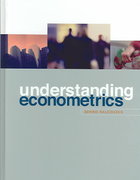Question
Consider an economy with two types of agents, denoted by i =1,2. Both workers share the same level of income, denoted by Y =300 (labor
Consider an economy with two types of agents, denoted by i=1,2. Both workers share the same level of income, denoted by Y=300 (labor supply is assumed to be perfectly inelastic). Type 1's utility is given by 1 = ; whereas, type 2's utility is given by 2 = 3, where c denotes consumption (net-of-tax income) and t denotes the tax (paid by type 2). Notice that type 2 exhibits an aversion to paying taxes and therefore suffers an additional disutility from paying taxes (on top of the decrease in consumption entailed by the tax that is being levied on him). The government is interested in collecting tax revenues in the amount of R=50.
a) Suppose first, that the government can distinguish b/w the two types of agents, and hence, levy an individualized lump-sum tax on each agent (1 0 and 2 0, respectively on types 1 and 2). What would be the optimal tax system assuming the government is seeking to maximize the sum of the utilities derived by the two agents? (Hint: Formulate the constrained maximization problem, then substitute the binding revenue constraint into the objective to obtain an unconstrained maximization).
b) Assume alternatively, that the government cannot distinguish b/w the two types of agents. What would be the optimal solution in this case? (hint: Individualized lump sum taxes are no longer feasible).
Following part b, assume that both agents can avoid paying taxes by incurring some cost (say, paying a fee to an expert tax consultant or a CPA). Let the cost per dollar avoided be denoted by f, where f=5/4. Assume that the government can block the avoidance opportunities available to the agents by incurring some fixed enforcement cost e=10.
c) What would be the optimal solution if the government is choosing to enforce no-avoidance?
d) What would be the social optimum if avoidance is available? Show that given the parametric assumptions, allowing for tax avoidance would be socially desirable. Accompany the calculations with an informal explanation. (Hint: Try to connect to the notion of 'tagging' and explain how enabling tax avoidance can serve to overcome the informational constraint and attain the first-best allocation characterized in part a. Think who of the two types is likely to engage in tax avoidance, given the parametric assumptions).
Step by Step Solution
There are 3 Steps involved in it
Step: 1

Get Instant Access to Expert-Tailored Solutions
See step-by-step solutions with expert insights and AI powered tools for academic success
Step: 2

Step: 3

Ace Your Homework with AI
Get the answers you need in no time with our AI-driven, step-by-step assistance
Get Started


